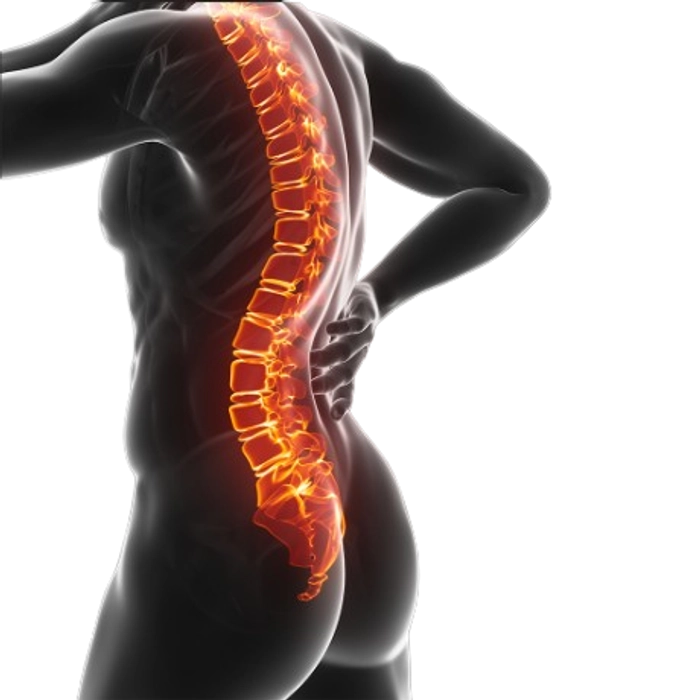Introduction
Lumbar lordosis refers to the natural curve in the lower spine. While a certain degree of curvature is normal, excessive curvature can lead to discomfort, pain, and other complications. At Dhyan Healthcare, we are committed to helping you understand and manage lumbar lordosis effectively.
What Causes Lumbar Lordosis?
Lumbar lordosis can result from various factors, including:
- Postural Issues: Poor posture, prolonged sitting, or improper lifting techniques.
- Obesity: Excess weight, particularly around the abdomen, can pull the pelvis forward.
- Weak Core Muscles: Weakness in the abdominal and back muscles can affect spinal alignment.
- Genetic Factors: Family history of spinal conditions.
- Developmental Issues: Conditions like spondylolisthesis or congenital spine abnormalities.
- Injury: Trauma to the spine or surrounding muscles.
Symptoms of Lumbar Lordosis
- Lower Back Pain: Often aggravated by standing or walking.
- Visible Curvature: An exaggerated inward curve in the lower back.
- Muscle Tightness: Particularly in the lower back and hip flexors.
- Limited Movement: Reduced flexibility and range of motion in the lower back.
- Fatigue: Due to the strain on the lower back muscles.
Diagnosis
Accurate diagnosis involves a thorough examination by a healthcare professional, which may include:
- Physical Examination: Assessing posture, gait, and spinal curvature.
- Imaging Tests: X-rays or MRIs to evaluate the degree of curvature and identify underlying causes.
- Flexibility and Strength Tests: Evaluating the flexibility and strength of the muscles supporting the spine.
Treatment Options
Managing lumbar lordosis focuses on relieving symptoms, correcting posture, and improving spinal alignment. Here’s a comprehensive treatment plan:
-
Physical Therapy
- Prescription: Customized exercise programs to strengthen core muscles and improve posture.
- Examples:
- Core Strengthening Exercises: Planks, bridges, and pelvic tilts.
- Stretching Exercises: Hamstring stretches, hip flexor stretches, and lower back stretches.
- Postural Training: Techniques to improve posture and spinal alignment.
- Benefits: Reduces pain, improves muscle balance, and enhances overall function.
-
Medications
- Prescription: Over-the-counter pain relievers like ibuprofen or acetaminophen.
- Benefits: Alleviates pain and reduces inflammation.
-
Lifestyle Modifications
- Prescription: Recommendations for maintaining a healthy weight, improving posture, and incorporating regular exercise.
- Examples:
- Weight Management: Diet and exercise programs to reduce excess weight.
- Ergonomic Adjustments: Using ergonomic chairs and workstations.
- Regular Physical Activity: Low-impact exercises like walking, swimming, or yoga.
- Benefits: Reduces strain on the lower back and promotes overall well-being.
-
Orthotic Devices
- Prescription: Lumbar supports or braces to improve posture and provide support.
- Benefits: Reduces pain and helps maintain proper spinal alignment.
-
Chiropractic Care
- Prescription: Spinal adjustments to correct misalignments and improve mobility.
- Benefits: Alleviates pain and enhances spinal function.
-
Surgical Intervention
- Prescription: Surgery is rarely needed but may be considered in severe cases where conservative treatments fail.
- Examples:
- Spinal Fusion: Surgery to stabilize the spine.
- Decompression Surgery: Removing pressure on spinal nerves.
- Benefits: Corrects severe deformities and improves quality of life.
Lifestyle and Home Remedies
In addition to professional treatment, several home remedies and lifestyle adjustments can help manage lumbar lordosis:
- Maintain Good Posture: Be mindful of your posture when sitting, standing, and walking.
- Exercise Regularly: Engage in activities that strengthen your core and back muscles.
- Use Proper Lifting Techniques: Bend at your knees, not your waist, when lifting heavy objects.
- Stretch Frequently: Incorporate regular stretching into your routine to keep muscles flexible.
- Stay Active: Avoid prolonged periods of sitting or standing; take breaks to move around.
When to See a Doctor
If you experience persistent lower back pain, noticeable curvature in your spine, or limited mobility, it’s crucial to seek medical attention. Early diagnosis and treatment can prevent complications and improve your quality of life.
Conclusion
Managing lumbar lordosis effectively requires a combination of professional medical treatment, supportive therapies, and proactive self-care. At Dhyan Healthcare, we are dedicated to providing comprehensive care tailored to your individual needs. If you suspect you have lumbar lordosis, don’t hesitate to contact us for a detailed evaluation and personalized treatment plan.
For more information or to schedule an appointment, visit our website or call our clinic. Your journey to a healthier, pain-free back starts here!


